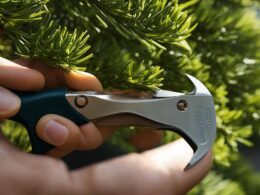If you’re a fan of begonias and want to ensure their healthy growth and vibrant blooms, understanding their sunlight requirements is crucial. Different begonia varieties have varying needs when it comes to sunlight, and providing them with the right conditions will help them thrive in your garden.
Most begonias perform best in light shade or part sun, receiving 4-6 hours of morning sun. This amount of sunlight is ideal for their growth and ensures that they produce abundant and vibrant blooms. These conditions are particularly suitable for the tuberous Non-Stop and Rex begonias, but other types can also benefit from similar sunlight conditions.
With advancements in hybridization, some begonia varieties can now tolerate full sun without any adverse effects. The Dragon Wing and boliviensis types, in particular, can handle more direct sunlight while still maintaining their health and beauty.
It’s important to note that the specific variety of begonia, as well as its root system (tuberous or fibrous), will determine its tolerance to sunlight. Therefore, it’s essential to consider these factors when choosing the right location for your begonias in the garden.
By providing your begonias with the optimal amount of sunlight, you can ensure their healthy growth and enjoy their vibrant blooms throughout the growing season.
Types of Begonias and Their Sunlight Requirements
Begonias, known for their vibrant blooms and foliage, can be divided into different types based on their root system and specific sunlight requirements. Understanding these variations can help you choose the right begonia for your garden and ensure its healthy growth. Let’s explore the different types of begonias and their sunlight preferences.
1. Wax begonias (Fibrous begonias) – Prefer sun and shade
Wax begonias, also known as fibrous begonias, are a popular choice for bedding plants. These begonias thrive in a mix of sun and shade, making them versatile for various garden conditions. They produce clusters of small flowers in shades of red, pink, and white, adding a splash of color to your garden beds or containers.
2. Tuberous begonias – Tolerate deeper shade
Tuberous begonias are famous for their large, showy blooms. While they can tolerate deeper shade, they still benefit from some direct sunlight. These begonias prefer well-drained soil and are excellent choices for hanging baskets or containers. Their stunning flowers come in a wide range of colors and can create a dramatic focal point in your garden.
3. Rex begonias (Rhizomatous begonias) – Prefer shade
Rex begonias, primarily grown for their foliage, prefer shade and are ideal for adding texture and variety to your garden. These begonias feature beautifully patterned, large leaves in shades of green, silver, and burgundy. Placing them in shaded areas or indoor spaces will accentuate their unique foliage and create a visually captivating display.
4. Solenia begonias – Tolerate full sun
Solenia begonias are a hybrid of wax and tuberous begonias, combining the best qualities of both. These begonias are known for their exceptional tolerance to full sun, making them an excellent choice for garden areas with ample sunlight. With their vibrant blooms and compact growth habit, Solenia begonias bring color and life to your garden beds or containers.
By selecting the right begonia type based on its sunlight requirements, you can create a thriving and visually appealing garden with these stunning plants. Whether it’s the vibrant clusters of wax begonias, the showy blooms of tuberous begonias, the unique foliage of rex begonias, or the sun-loving Solenia begonias, there’s a begonia type for every garden and gardener. Experiment with different varieties and create an enchanting begonia-filled oasis!
Tips for Growing Begonias in the Garden
When it comes to growing begonias in your garden, there are a few important factors to consider in order to ensure their health and beauty. Paying attention to watering, sun exposure, soil requirements, fertilizer, deadheading, and preventing powdery mildew can help you successfully cultivate these stunning plants.
Watering
Begonias do not require heavy watering and can tolerate light periods of drought. Overwatering can lead to root rot and other issues, so it’s important to strike a balance. It’s best to water your begonias when the top inch of soil feels dry to the touch. Aim for moderate, consistent moisture, and avoid letting the soil become waterlogged.
Sun Exposure
Providing your begonias with the right amount of sun exposure is crucial for their optimal growth and blooming. These plants thrive with approximately 4 hours of morning sun. Placing them in an area with too much direct sunlight can cause leaf scorch, while too little sunlight can result in weak growth and lack of blooms. Find a balance that suits your specific begonia variety.
Soil Requirements
Choose a light, well-drained soil for your begonias. They prefer soil that allows excess water to drain away, preventing root rot. You can amend the soil with organic matter, such as compost, to improve its fertility and drainage. This will provide your begonias with the ideal growing conditions they need.
Fertilizer
Regular fertilization is essential for the healthy growth of your begonias. Use an all-purpose fertilizer and follow the recommended application instructions on the packaging. Applying fertilizer every 4-6 weeks during the growing season will provide your plants with the necessary nutrients for vibrant blooms and lush foliage.
Deadheading
Keep your begonias looking beautiful and encourage the growth of new blooms by regularly deadheading wilted flowers. Pinch off the faded blooms at the base of the stem to promote the production of more flowers. This will help your begonias maintain their stunning displays throughout the growing season.
Powdery Mildew Prevention
Powdery mildew can be a common issue with begonias, but you can prevent it by ensuring adequate airflow around your plants. Avoid overcrowding them and provide enough space for air circulation. Additionally, be cautious not to overwater your begonias, as excess moisture can create a favorable environment for powdery mildew to develop.
Conclusion
In conclusion, understanding the optimal sunlight conditions for begonias is crucial for their care and to ensure vibrant and long-lasting blooms. Most begonias thrive in light shade or part sun, although there are varieties that can tolerate full sun exposure.
To provide the best care for your begonias, it is important to find the right balance of sunlight, water, and soil conditions. Begonias require well-drained soil and should be watered moderately, avoiding excessive moisture. Adequate sunlight, typically 4-6 hours of morning sun, promotes healthy growth and promotes blooming.
Regular fertilization with a balanced all-purpose fertilizer and deadheading of wilted flowers can further enhance the vibrancy and longevity of blooms. By following these tips and providing optimal care, you can enjoy the beauty and charm of begonias in your garden, adding a touch of color and elegance to your outdoor space.
Do Begonias Require the Same Amount of Sunlight as Palm Fronds?
Begonias require a different amount of sunlight compared to palm fronds explained here. Begonias prefer bright, indirect light, while palm fronds thrive in full sun to partial shade. It’s essential to understand the specific sunlight needs of each plant to ensure they grow healthy and vibrant.










